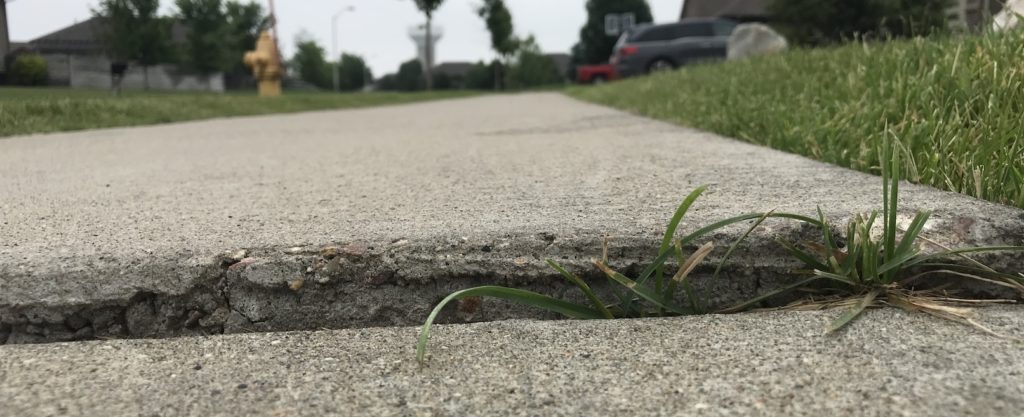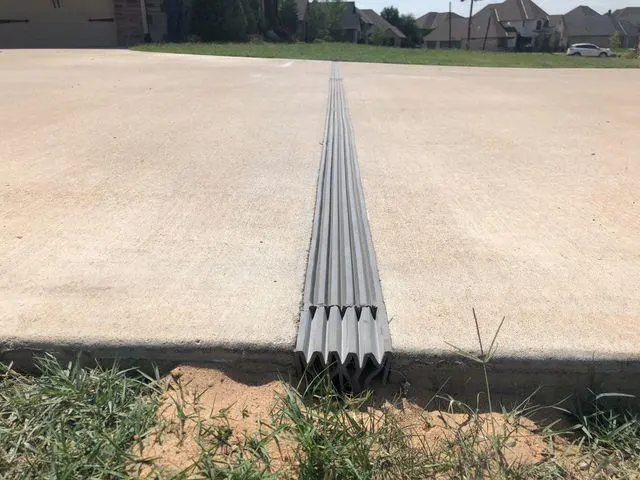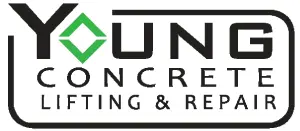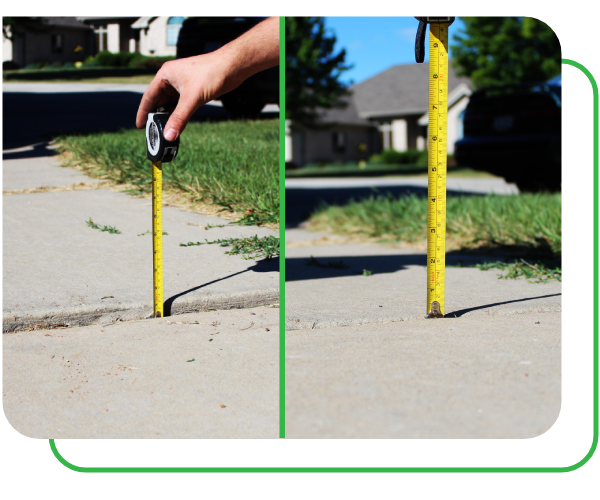Concrete Lifting
and Leveling

Why Does Concrete Settle
The main reason concrete settles is due to the moisture content in the soil. Soil will shrink due to drought causing the concrete to fall into the void below. If there is too much moisture in the ground, the heavy concrete can sink into the mud. As concrete settles, it will crack and break leaving dangerous tripping hazards.
To permanently fix the sunken concrete, we need to address the problem--the soil. At Young Concrete Lifting and Repair, we use a hydrophobic polyurethane foam to lift the concrete back into place and fill the voids below. Our lifting process only takes a few hours to complete and is usually only half the price of replacing the concrete!
Our Process
First, we drill ⅝” holes into the sunken concrete. After the holes are drilled, we inject polyurethane foam through the holes under the concrete.
The foam will expand, filling any voids under the concrete, and then lift the concrete back into place. The polyurethane foam is hydrophobic, so water cannot wash out the foam and your concrete will be permanently lifted and stabilized.
After the concrete is lifted, we patch the holes with cement, making the repaired area look like we were never there. The cure time for this process is extremely quick and you can use the concrete the same day!
We can use polyurethane foam to lift the following concrete slabs:
Caulking
When concrete cracks, it allows water to intrude underneath, which can lead to soil washout, even more cracking, and settlement. By properly caulking your control joints and cracks, you will prevent these issues from ever happening or getting worse and ultimately prolong the lifespan of your concrete.
We use the best product in the industry. It’s 100% silicone caulk which is made to withstand both hot and cold temperatures. It’s flexible and won't break. It’s professionally installed, warrantied, and has a very nice and clean look. Caulking is a great way to protect your concrete.
We clean the joints or cracks that we are sealing. After the area is cleaned and prepped, we apply the caulk. We smooth out the caulk with a specialized tool and apply a thin layer of sand over the top so it blends in nicely with the concrete.
We can use our caulk in the following areas:


Surface Sealant
Sealing the surface of your concrete is a proactive way to extend the life of your concrete. If the surface of your concrete is not sealed, water can absorb into it like a sponge. In cold weather, the water can freeze, expand, and pit and flake the surface of your concrete.
Our surface sealant protects concrete from pitting and flaking and also protects against harsh chemicals and stains. We can use our surface sealant in the following areas:
Expansion Joints
Installing a properly working expansion joint will prevent your driveway from cracking. Expansion joints are made to absorb the pressure from the expansion and contraction of your concrete. In the hot summer months, your concrete will expand, and in the cold winter months, your concrete will contract.
A properly installed expansion joint will absorb the pressure of this expansion and contraction and help prevent your concrete from cracking. New expansion joints are commonly installed in driveways and sidewalks.


